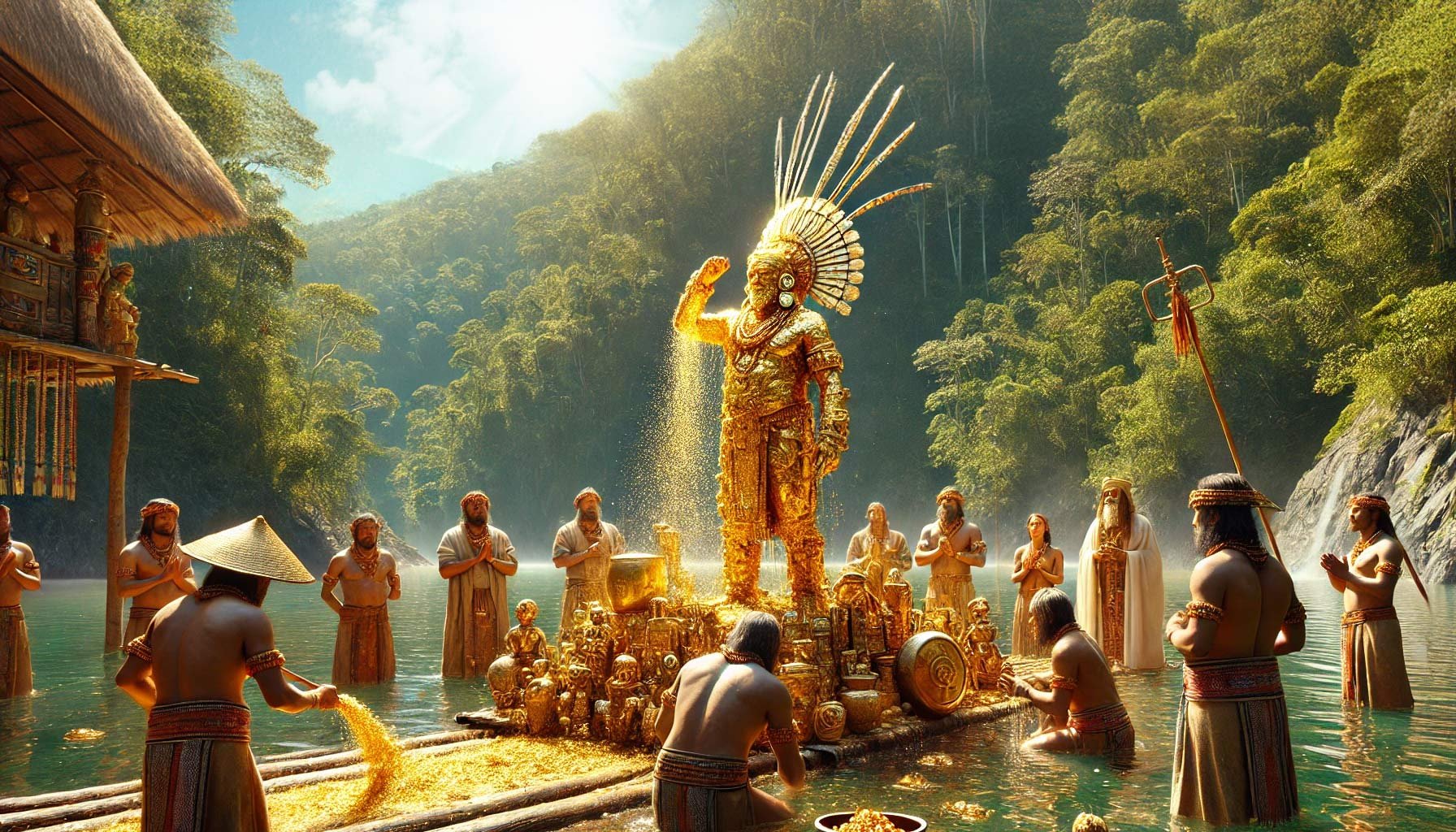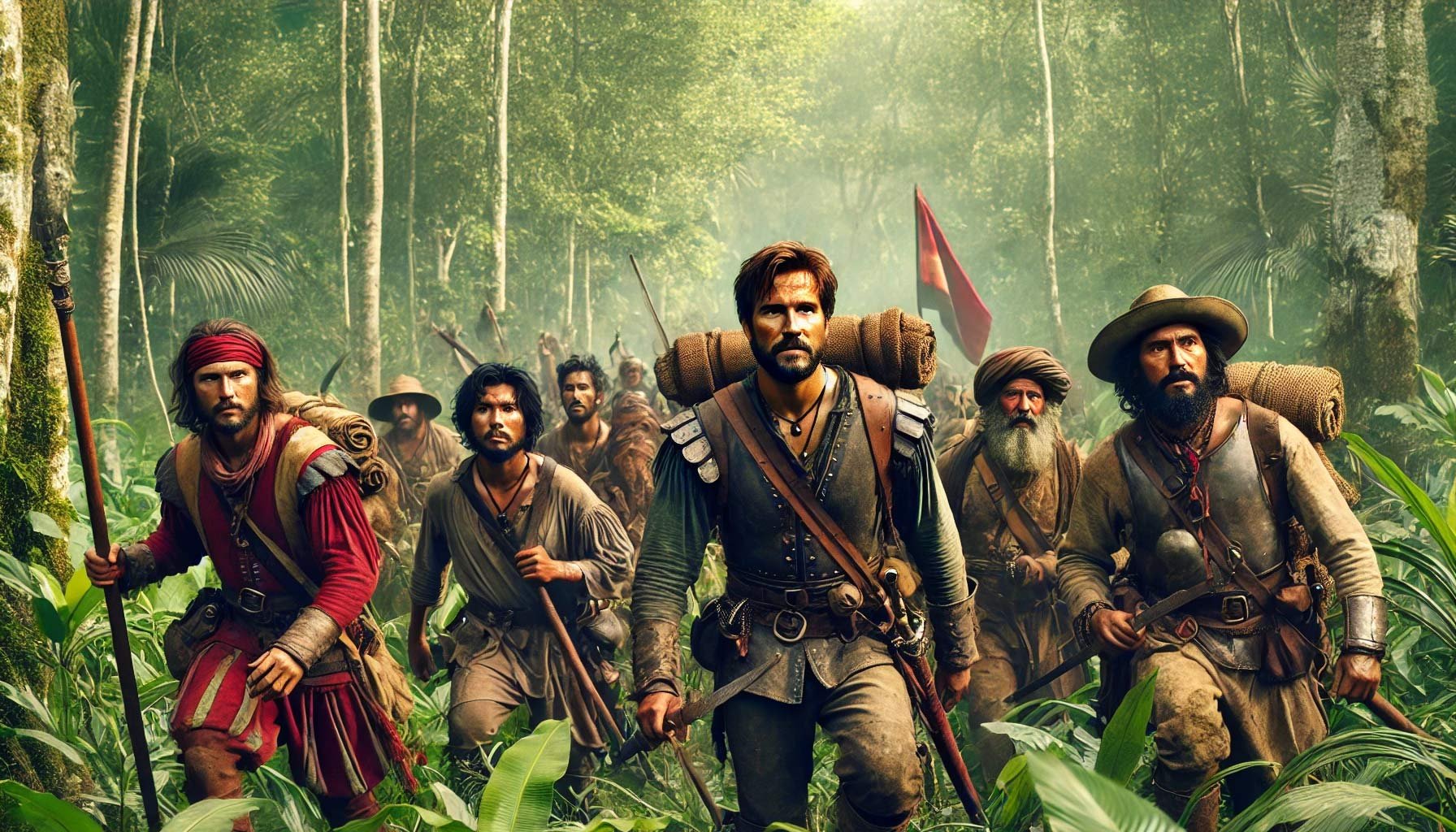
exploring the enigma: the lost city of el dorado
Picture yourself in the dense, misty rainforests of Colombia and Venezuela. The air is thick with humidity, the sounds of exotic birds fill the air, and the scent of damp earth and blooming flowers surrounds you. This is the realm where the legendary city of El Dorado is said to lie, a place where gold was as common as dirt, and treasures beyond imagination awaited those brave enough to seek them. Imagine stepping into this world, where the whispers of ancient myths guide your path through the emerald canopy. Every shadow and glimmer of light hints at hidden wonders, urging you deeper into the heart of the jungle, where the secrets of El Dorado await discovery.

The Origins of the Myth
The story of El Dorado begins with the Muisca people, an indigenous civilization known for their rich cultural practices. Among their most fascinating rituals was one involving their chieftain, the Zipa. Imagine a scene at Lake Guatavita: the chieftain stands on a raft, his body shimmering as he is covered in gold dust. This golden figure sails to the center of the lake, where he dives into the waters, washing off the gold as an offering to the gods. Around him, priests and nobles throw gold objects and precious gems into the lake, creating a spectacle of devotion and wealth.
The Muisca Civilization
The Muisca people were one of the four advanced civilizations in the Americas, alongside the Aztecs, Mayas, and Incas. They inhabited the central highlands of present-day Colombia, where the landscape is a tapestry of rolling hills and fertile valleys. The Muisca had a complex society, excelling in agriculture, trade, and religious practices. Their skill in goldsmithing was unparalleled, producing intricate pieces that dazzled the eyes and fired the imaginations of European explorers.
Misunderstandings and Exaggerations
European explorers, hearing tales of these rituals, let their imaginations run wild. The sight of small amounts of gold among the tribes led them to believe in vast, hidden treasures. The chieftain covered in gold dust became the foundation for tales of an entire city made of gold. Miscommunications and cultural misunderstandings further fueled these legends. Stories of golden streets, glittering palaces, and unimaginable wealth spread quickly through Europe, captivating the minds of adventurers and treasure hunters.
The Quest for Wealth
Driven by these tantalizing tales, countless expeditions set out to find El Dorado. The dense Amazon jungle and treacherous mountains became the backdrop for many perilous journeys. Explorers like Gonzalo Pizarro and Sir Walter Raleigh ventured into the unknown, only to return empty-handed but with stories that added to the legend's allure. Each failed expedition made the city seem more mysterious and unreachable, turning it into the ultimate symbol of lost riches.
Gonzalo Pizarro
In 1541, Gonzalo Pizarro, the brother of the famous conquistador Francisco Pizarro, embarked on a daring expedition from Quito, Ecuador, in search of El Dorado. Pizarro was accompanied by Francisco de Orellana, who eventually broke away from the main party and became the first European to navigate the Amazon River. Pizarro's journey was fraught with immense hardships, including starvation, disease, and constant battles with the elements. Despite the suffering and loss, the dream of El Dorado continued to drive them forward, though they ultimately returned empty-handed.
Sir Walter Raleigh
English explorer Sir Walter Raleigh made two significant expeditions in search of El Dorado, in 1595 and 1617. Imagine Raleigh and his men navigating the vast Orinoco River in present-day Venezuela, their small boats cutting through the shimmering waters surrounded by thick, impenetrable jungle. Raleigh was convinced that the city of gold lay somewhere within this uncharted region. His expeditions were filled with both discovery and disappointment, as he failed to find any evidence of the legendary city. However, his detailed accounts and maps brought the myth of El Dorado into the English-speaking world, ensuring its place in history.
Daily Life in the Mythical City
Imagine the daily life in the mythical El Dorado: a city where gold was so plentiful that it was used for everyday items, from utensils to building materials. Streets paved with gold, palaces with walls of the precious metal, and people adorned in glittering jewelry. The society was believed to be advanced and sophisticated, with bustling marketplaces, elaborate ceremonies, and a culture steeped in luxury and splendor.
The Truth Behind the Legend
Despite the allure of these stories, no evidence of such a city has ever been found. The real El Dorado lies not in a single city of gold but in the rich cultural heritage and complex societies of the indigenous peoples of South America. The myth of El Dorado serves as a testament to the power of storytelling and the enduring human desire for adventure and discovery.First up, how did samurais make a living? Well, they mostly earned their keep through a stipend from their feudal lords, known as daimyo. This stipend was usually paid in rice, the main currency of the time. The amount depended on their rank and the land they managed. Besides their warrior duties, samurais often served as advisors, guards, or administrators. Talk about multi-talented!
Listen and Learn is an AI Assisted production
Listen and Learn is a podcast that combines human insight with artificial intelligence to educate, entertain, and spark curiosity. It’s goal is to demonstrate how AI can enhance human learning and advance knowledge. Both human expertise and AI collaboration bring this show to life.
Subscribe to Listen and Learn on YouTube, Apple Podcast or Spotify.



